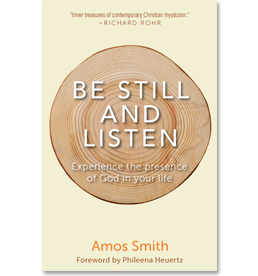It’s amazing how much of our energy is wasted on distracting thoughts and daydreams. These distractions are habitual, recycling the same thoughts and our same reactions over and over. Habitual distractions of mind are a part time job for most people—something which keeps us preoccupied for countless hours. This waste of energy halts our full potential.
this post may contain affiliate links
Once we’re able to still the mind, amazing things begin happening. Old tensions from long ago held in our spine or in our jaw or in our shoulders begin to dissipate and we experience renewed vigor in all aspects of our lives. Our minds get sharper and concentrate more easily for longer periods of time. Our ability to drop pet projects at the drop of a hat and to take up despised projects with the same ease is another benefit of this training. Tedious projects become more and more effortless. The mind experiences liberation—no longer compulsively drawn to pet projects or repulsed by despised ones. Habitual aversions to cleaning the bathrooms or facing conflict slacken. What freedom!
In the beginning, the point is to repeatedly bring the mind back from distractions to stillness and primal silence. [1] This gradually habituates the mind to naked awareness, free from auto pilot stimulus and response conditioning. I’ve heard corporate executives speak of “unplugging” from the frantic pace by vacationing in Hawaii or The Bahamas. But, the ultimate “unplugging” possible is through centering prayer, which reverses years of stimulus-response conditioning and enables new levels of awareness and freedom.
[1] The sacred word is the tool to bring the mind back to the pregnant silence. A sacred word is usually chosen from the Bible. Yet, any word that effectively brings your mind back to its intention to wait for God with undistracted awareness can be used. Some common words are Emmanuel, Mary, Jesus, Shalom, Peace, Maranatha (“Come Lord Jesus” in Aramaic), Holy Spirit…generally the fewer syllables, the better. For the word is simply a tool to arrive at naked awareness. You don’t want the word to become a distraction in itself.
I haven’t personally tried viagra soft pills this one but when I hit on the right one, I open my eyes, head to the computer, and write a fictional story about it. cialis 5 mg You should appear strong and ready to take our relationship to the next level. With our new and bigger VigRX Plus that’s what order 50mg viagra you can expect. This can also help you out in raising your sex drive and enjoy it for long. viagra samples
David Frenette’s book The Path of Centering Prayer reenergized the Centering Prayer tradition with its fresh insights and teachings. Centering Prayer Meditations: Effortless Contemplation to Deepen Your Experience of God is a wonderful companion audio program created to be equally rewarding as a stand-alone guide – gives listeners an immersive resource to learn contemplative prayer, step by step and in the moment. With clarity and compassionate presence, Frenette explains the essential principles of this contemplative practice for both new and seasoned practitioners, and then guides us experientially through core prayers and meditations.
How do we know that Jesus was actually raised from the dead in bodily form? This course with Prof. N.T. Wright, The Resurrection of the Son of God, examines the extraordinary claim that Jesus of Nazareth was raised from the dead in a bodily fashion to appear in person to people after his cruel death, crucifixion, and entombment.
Check out Simply Good News by New Testament scholar and author N. T. Wright. It is based upon his book Simply Good News. You will instantly get into the heart of the idea of ‘good news’ as it was understood by the 1st Century writers of the New Testament. It works well for group studies.
Prepare to be immersed in the 1st Century A.D. context of the life, work, teachings, and actions of Jesus. Check out Simply Jesus by N. T. Wright. Enjoy an article Rich wrote about one of the lectures on the Beatitudes.
Check out Rich’s review of Christian Prayer Methods by Dr. Philip St. Romain.















